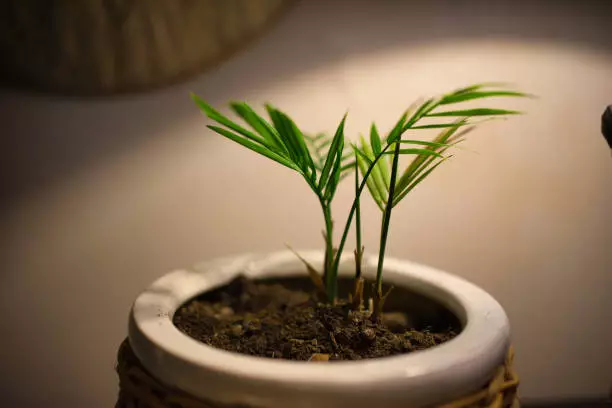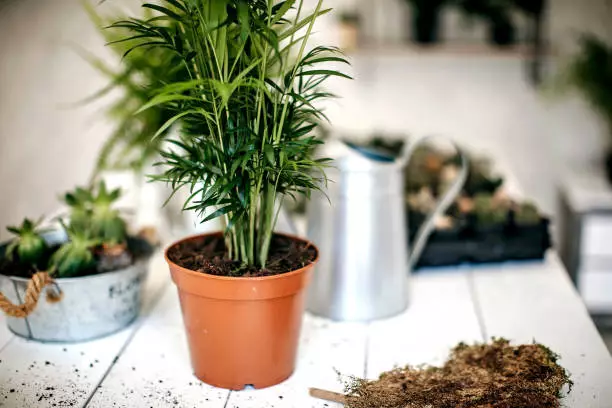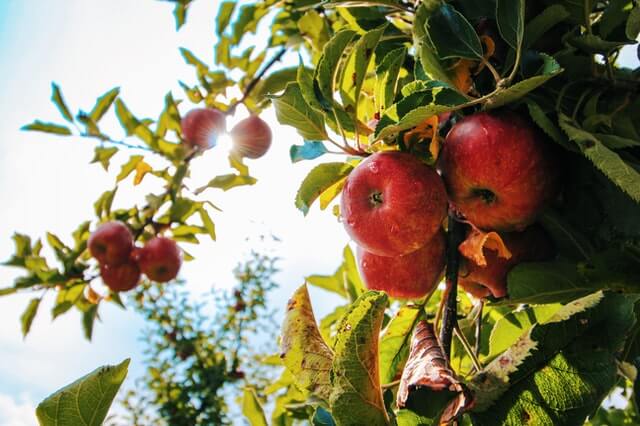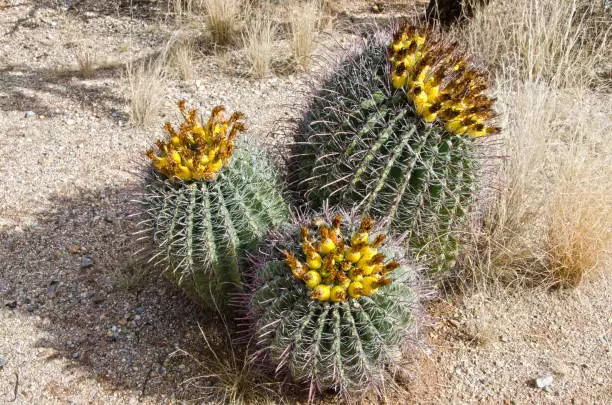Areca palms are relatively fast-growing perennial plants. So, what influences their fast growth rate? And, what hinders their fast growth rate? Let’s find out the factors.
The growth rate of areca palm plants depends on the growing conditions, environmental factors, and nutrient efficiency. Areca palms are lovers of optimal conditions. So, under the right optimal growing conditions, your areca palms will grow at a fast rate. If the growing conditions are not favorable, the growth rate slows down.
Everything good comes at a cost. So, for your areca palms to grow fast, you need to provide them with favorable growing conditions.
Areca palm growth rate
Areca palm’s growth rate depends on the growing conditions, nutrient efficiency, and environmental factors. In the right optimal conditions, areca palms will grow faster than in unfavorable conditions. In favorable conditions, outdoor areca palms grow to about 10 feet tall every year with the roots of the palm tree spreading horizontally from the trunk. So, in two to three years, your areca palms will have grown into mature plants.
RELATED: HOW DEEP DO PALM TREE ROOTS GROW
Indoor areca palms do not grow tall because of the limiting conditions. In a well-draining planter, with medium humidity, room temperature, and partial sunlight, your areca palms will grow faster. Anything other than favorable conditions will cause stunted growth for your areca palms.
Why is my areca palm growing slowly?

The slow growth rate of areca palms results from poor and unfavorable growing conditions. Below are some of the factors that will cause stunted growth of your areca palms:
1. Nutrients deficiency
Nutrient deficiency either affects the new growth leaves or the old foliage. Lack of enough mobile nutrients such as nitrogen will cause the browning and dying of the old leaves. With not enough nutrients to support the vegetation growth of the new foliage, it leads to stunted growth.
Insufficient immobile nutrients such as iron affect middle and young foliage growth. The middle and young foliage turns brown and dies. With only the old leaves remaining, there will be no enough food production. So, due to the lack of enough food, the areca palm grows at a slower rate.
2. Underwatering
Regular underwatering of your areca palms will keep them alive, but they will grow at a slower rate and even develop brown tips on the leaves. Underwatering your areca palms slows down photosynthesis. This means that there will be no production of enough food for the plants.
RELATED: HOW TO TREAT BROWN TIPS ON ARECA PALM LEAVES
Also, under watering will affect the transportation of nutrients up to the stem and the leaves. Underwatering weakens the root system. The weak root system will not be able to absorb enough nutrients from the soil. So, due to the lack of enough food and nutrients, your areca palms will grow at a slow rate. The new leaf growth will be smaller than normal.
Stunted growth from lack of enough water is temporary, and you can correct it by regularly watering your areca palms with enough water. To determine if you are underwatering your areca palms, use a screwdriver. A screwdriver will not penetrate easily in under-watered soil.
3. Compact roots
Growing areca palms in small planting pots will lead to compaction of the roots. Compacted roots do not have space to grow healthy, strong, and deeper. Also, compacted are susceptible to diseases like root rot diseases. So, either the weak or the unhealthy roots will be unable to absorb enough nutrients from the soil. The result is stunted growth.
4. Pests and diseases
Areca palms are susceptible to pests such as spider mites and diseases like root rot disease. Spider mites will feed on the stem’s saps interfering with the transportation of nutrients to the leaves. So, the new foliage growth will be smaller than normal.
Root rot disease damages the healthy roots leaving behind a few healthy roots. The few functional, healthy roots will not absorb enough nutrients for the plant. Thus, resulting in a slow growth rate.
5. Environmental factors
Environmental aspects that contribute to the growth of areca palms include light, humidity, sunlight, and temperature. Areca palms love optimal conditions. Extreme environmental factors will lead to a slow growth rate—for instance, very low or very high temperatures.
How to make areca palms grow faster

How to make areca palms grow faster, is by simply providing favorable conditions. Areca palms appreciate optimal growing conditions. The following are some of the favorable conditions that can help fasten the growth rate of areca palms:
1. Fertilizer
The application of foliar or organic fertilizer with macro and micronutrients enriches the soil. Areca palms flourish and grow fast in nutrient-rich soils and can develop into woody-like trees. Fertilization also helps substitute the nutrients lost through leaching. Therefore, regularly fertilize your areca palms. But, do not use excessive fertilizer on areca palms as it causes browning of leaves and other significant damages.
RELATED: WHAT ARE THE USES OF PALM TREE WOOD
2. Adequate watering
Areca palms appreciate regular watering. Areca palms grow well in moist soils, not too wet or dry. Waterlogged soils cause root rot disease while under watering results in stunted growth. Also, use clean, pure water for your areca palm plants. This is because fluorinated or chlorinated water will hinder the fast and healthy growth of areca palms.
3. Sunlight
Sunlight helps in the formation of chlorophyll. In return, chlorophyll aids in the photosynthesis process to produce food for the plants. So, if the plants get enough sunlight, there is sufficient formation of chlorophyll and production of food and energy. With enough food for the plants, then you are sure your areca palms will grow at a fast rate.
4. Soil conditions
Maintain healthy and living soil. Areca palms grow well and fast in well-draining, nutrient-rich acidic soils. Areca palms thrive well in moist soils but not in waterlogged soils. So, practice organic farming such as mulching, compost manure, and crop residue to improve the soil’s potential to retain moisture.
Also, when organic farming material decomposes, they add nutrients to the soil. Thus enriching the soil and making it more suitable for the fast growth of your areca palms.
5. Humidity
Areca palms flourish well in optimal to high humid regions. High humidity levels increase the transpiration rate. Transpiration releases water vapor that saturates the areca palm leaves and keeps them wet. This discourages dust from settling on the plant’s surface, thus keeping pests such as spider mites and mealybugs away. With no pests threatening your areca palms, they will grow fast and vigorously.
6. Temperature
Temperature impacts plant processes such as photosynthesis, respiration, and transpiration. These processes impact the vegetative growth of your areca palm. Areca palms grow well under room temperature 20-270C, and they are sensitive to low and very high temperatures. So, keep your indoor areca palms away from the cold corner and air-conditioned rooms.
To prevent your outdoor areca palms from frost, use frost-protection spray or mulch the base of the plant. In favorable room temperature conditions, areca palms will grow healthy and at a fast growth rate.
7. Misting
Misting keeps away pests such as spider mites and mealybugs. With no potential pest infestation, your areca palms will grow fast and healthy.
How fast do areca palms grow outdoors?

In ideal outdoor conditions, areca palms grow at a fast rate. This is because there are no growth limitations. The plant can grow to its ultimate potential height and width. Also, the root can grow as deeper as they can. On the outside, you can also train your areca palms to grow in full sun. But, you will achieve the best results if you plant under partial sunlight.
How big do areca palms get?
Indoor areca grows to a height of 6 to 10 feet and is about 2-3 feet wide. When indoor areca palms outgrow their space, move and plant them outside. This is because you cannot prune back to reduce their height and width. Outdoor areca palms have no limitations, and in favorable growing conditions, they grow to a height of 25 to 30 feet.
References:
[1] Oregon State University, Extension services: Environmental-factors-affecting -plant-growth
[2] Clemson Cooperative Extension, Home and Gardening Information Centre: Indoor-palms



